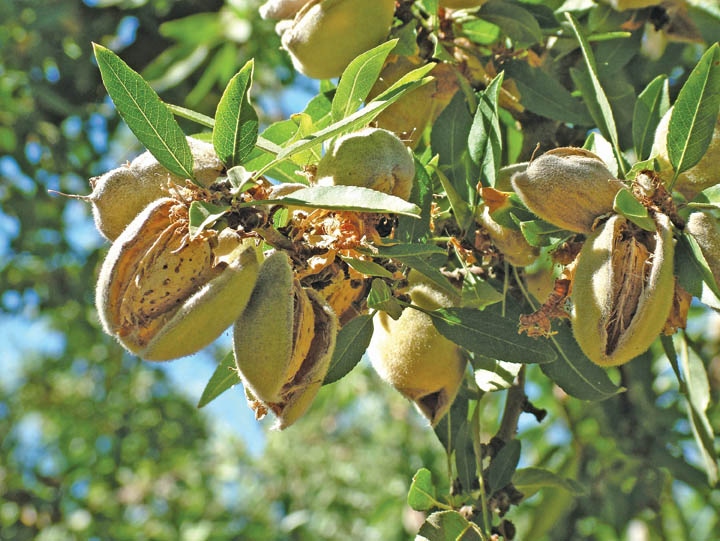June 10, 2013

As environmental regulatory issues have evolved and become more complex, research funded by the Almond Board’s Environmental Committee has also evolved over the last decade. The work of the environmental research program not only helps growers maintain sustainable almond production, it also helps to collect important data related to almond production, which has become the target of increasingly complex environmental regulations.
When the Environmental Committee was first formed a decade ago, the California Air Resources Board (CARB) was regulating PM10 emissions using a single study on which it based its calculations for how much PM10 dust was emitted from almond and walnut harvesting. An eight-year effort initiated by the Environmental Committee found that the actual amount of PM10 emissions was roughly a third less than the CARB number. This research effort also led to the development of techniques to reduce dust while harvesting.
Fine-Particle Emissions
This research and data development continues to be critical as regulators now turn their attention to regulating PM2.5 (fine) particulate emissions in the San Joaquin Valley. Regulators have been assuming a certain percentage of the dust emitted at almond harvest is PM2.5. However, data from the PM10 work indicates that almost none of the ag dust created during harvest is that small.
When CARB developed baseline emissions for N2O, a potent greenhouse gas, there was no data for emissions from perennial crops in an irrigated system in a Mediterranean climate. As a result of recent Environmental Committee–funded studies, there now is some five years of data collected under different conditions, showing both that the N2O emissions from nitrogen fertilization are less than initially assumed and that they are very difficult to consistently reduce.
Nitrate Issue
The focus of research over the next couple of years will help us gain a better understanding of nitrate movement in the root zone and below, given the lack of data in this area. Water quality regulators assume that any nitrogen not taken up by the plant is available for leaching; there is very little data showing how nitrogen best management practices actually affect the amount leached below the root zone. To obtain this data, the committee pulled together a group of researchers who know both the plant and the soil aspects of nitrogen movement, and whose work will be funded jointly by a California Department of Food and Agriculture Fertilizer Research and Education Program (CDFAFREP) grant and contributions from the ABC and Pistachio Research Board. This work is just beginning.
More from Western Farm Press
Farmer’s death puts national focus on killer bees
Honey bees a landmine solution?
15 must-ask questions before buying farmland
8 keys to a better wine grape grower contract
Cliff Young — the farmer who outran the field
Almond growers groom $3 billion crop
About the Author(s)
You May Also Like




